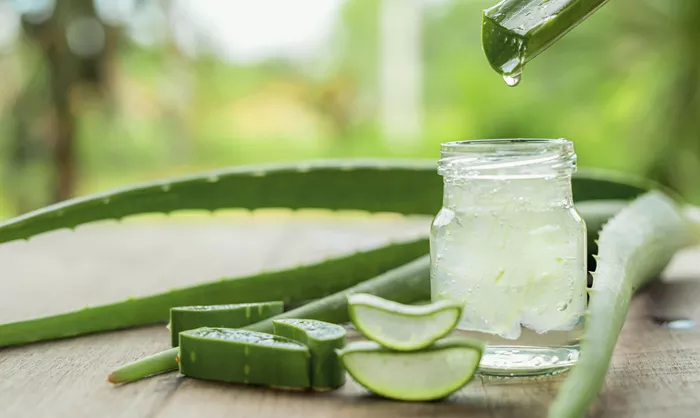Succulents are beautiful, hardy plants loved by many for their ease of care and unique appearance. However, some of these plants can be toxic to humans, particularly if ingested. In this article, we’ll explore which succulents can be harmful, their effects on human health, and how to handle them safely. It’s important to be aware of which plants may pose a risk, especially if you have children or pets at home.
The Toxicity of Succulents
Succulents store water in their leaves, making them drought-tolerant and ideal for indoor gardening. While most succulents are safe to handle, there are a few that can be harmful if eaten or if they come into contact with sensitive skin. The level of toxicity can vary from mild irritation to more severe symptoms, depending on the species.
Common Toxic Succulent Species
Here are some succulents that are known to be toxic to humans:
Aloe Vera
Although Aloe Vera is widely used for its medicinal properties in skincare, it can be toxic when ingested. The gel inside the leaves is generally safe for external use, but the latex (yellow substance) found just under the skin can cause stomach cramps, diarrhea, and nausea if consumed. Ingesting large quantities may be more harmful.
Kalanchoe
Kalanchoe species, like Kalanchoe daigremontiana (mother of thousands), are also toxic to humans. They contain compounds called bufadienolides, which can cause nausea, vomiting, and heart problems if ingested. The toxicity level varies between species, but it’s best to avoid consuming any part of this plant.
Euphorbia
Euphorbia is a large genus of plants, some of which are toxic. The sap of Euphorbia plants can cause skin irritation, and if it enters the eyes, it can lead to serious eye damage. Ingesting any part of this plant can result in vomiting, diarrhea, and abdominal pain. Children and pets are particularly vulnerable to the effects of Euphorbia.
Senecio
Senecio plants, including the popular “String of Pearls” (Senecio rowleyanus), are toxic due to the presence of pyrrolizidine alkaloids. These compounds can cause liver damage when consumed in large quantities. Symptoms of poisoning include vomiting, diarrhea, and abdominal discomfort. It’s important to keep these plants out of reach of children.
Crassula (Jade Plant)
Crassula ovata, commonly known as the jade plant, is a popular succulent. However, it can cause mild toxicity if ingested. Symptoms of poisoning may include vomiting, lethargy, and loss of appetite. While jade plants are not as dangerous as other succulents, it’s still advisable to keep them out of reach of small children.
Symptoms of Succulent Poisoning
If someone ingests a toxic succulent, the symptoms can vary depending on the plant. Common signs of toxicity include:
- Nausea and vomiting
- Diarrhea
- Abdominal pain
- Skin irritation or rashes
- Swelling of the mouth or throat
- Dizziness or confusion
In severe cases, particularly with plants like Euphorbia, symptoms may be more serious, requiring immediate medical attention.
How to Handle Toxic Succulents Safely
If you’re growing succulents at home, there are a few safety tips to ensure you’re protecting yourself and your loved ones:
Keep Toxic Plants Out of Reach: If you have young children or pets, it’s crucial to place toxic succulents on high shelves or in areas where they cannot access them.
Wear Gloves When Handling: Some succulents, such as Euphorbia, produce sap that can irritate your skin. Always wear gloves when handling these plants to prevent skin contact.
Educate Family Members: Make sure everyone in your household knows which plants are safe and which ones are toxic.
This can prevent accidents, especially when it comes to young children who may be curious and prone to putting things in their mouths.
First Aid for Succulent Poisoning
If you or someone else accidentally consumes part of a toxic succulent, it’s important to act quickly:
Rinse the Mouth: If the plant’s sap or leaves have been ingested, rinse the mouth with water immediately.
Call Poison Control: It’s important to contact your local poison control center for advice on what to do next.
Monitor Symptoms: Keep an eye out for symptoms of poisoning such as nausea, vomiting, or difficulty breathing. If symptoms worsen, seek medical attention immediately.
Are Succulents Safe to Have Around Pets?
While succulents are generally considered safe for adults, many succulents are toxic to pets. Cats and dogs are particularly prone to ingesting plants, so it’s essential to choose non-toxic succulents for your home if you have pets. Some pet-friendly succulents include:
- Hens and Chicks (Sempervivum)
- Burro’s Tail (Sedum morganianum)
- Christmas Cactus (Schlumbergera)
If you’re unsure about the toxicity of a specific succulent, always research it before bringing it into your home.
Conclusion
Succulents are a wonderful addition to any home, but it’s important to be aware that some species can be toxic if ingested or handled improperly. Always keep these plants out of reach of children and pets, and educate yourself on how to handle them safely. By being informed, you can enjoy the beauty of succulents without putting your loved ones at risk.


